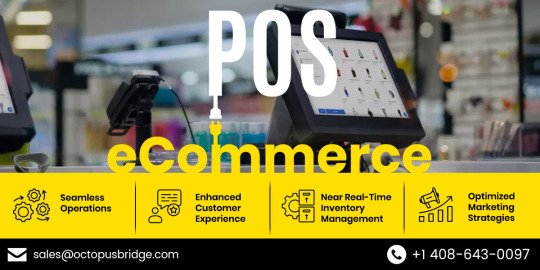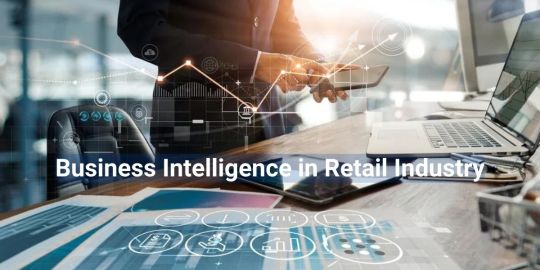#Omnichannel inventory management software
Explore tagged Tumblr posts
Text
Mastering Logistics: The Triad of Warehouse Management, Supply Chain Enterprise Platforms, and Omnichannel Inventory Management
In the fast-paced realm of logistics, staying ahead requires a strategic approach to warehouse management and inventory control. This blog delves into the intricacies of these processes, highlighting the pivotal role of supply chain management enterprise platforms and the transformative power of omnichannel inventory management software.

1. Warehouse Management and Inventory Control: The Dynamic Duo
Efficiency in Operations:
Effective warehouse management is the cornerstone of logistical success. From optimizing storage space to implementing efficient picking and packing processes, a well-managed warehouse ensures streamlined operations and minimizes the risk of errors.
Real-time Inventory Visibility:

Inventory control goes hand in hand with warehouse management. The ability to track and manage stock levels in real time enables businesses to make informed decisions, prevent stockouts, and maintain a healthy balance between supply and demand.
2. Supply Chain Management Enterprise Platform: Unifying Operations
Holistic Supply Chain Oversight:
A Supply Chain Management enterprise platform acts as the nerve center of logistical operations. It provides a comprehensive view of the entire supply chain, from sourcing raw materials to delivering finished products. This holistic oversight facilitates better decision-making and adaptability to market dynamics.
Integration for Seamless Workflow:
Integration is key in a supply chain enterprise platform. By connecting various elements like procurement, manufacturing, and distribution, businesses create a seamless workflow. This integration minimizes delays, reduces costs, and enhances overall operational efficiency.
3. Omnichannel Inventory Management Software: Meeting Customer Expectations
Unified Customer Experience:
In the era of omnichannel retail, meeting customer expectations requires a unified inventory management approach. Omnichannel inventory management software ensures that inventory levels are synchronized across all sales channels, providing customers with accurate information and a seamless shopping experience.
Adaptability to Demand Variations:
Omnichannel inventory management is agile in responding to fluctuations in demand. It allows businesses to allocate inventory intelligently, preventing stockouts and overstock situations. This adaptability is crucial for meeting customer demands in a dynamic market.
Conclusion: Harmonizing Logistics for Success In conclusion, the trifecta of warehouse management and inventory control, supply chain management enterprise platforms, and omnichannel inventory management software forms the backbone of a successful logistics strategy. Businesses that prioritize these elements gain a competitive edge by ensuring operational excellence, adaptability, and a superior customer experience. As the logistics landscape continues to evolve, investing in these integrated solutions becomes not just a choice but a necessity for sustained growth and resilience. Explore the possibilities that this triad offers, and elevate your logistics game to new heights in an era where precision and adaptability are the keys to success.
#warehouse management and inventory control#Supply Chain Management enterprise platform#Omnichannel inventory management software
0 notes
Text
Unlock the Future of Retail with Seamless eCommerce Integration!
Are you ready to revolutionize your business and captivate customers in the digital age? Discover the power of eCommerce and POS Integration – the dynamic duo that takes your retail experience to new heights!

The eCommerce Advantage:
Global Reach, Local Impact: Connect with customers worldwide while maintaining a local touch.
Convenience Redefined: Elevate the shopping experience with 24/7 accessibility from anywhere.
Data-Driven Success: Harness valuable insights to tailor your strategies and elevate your brand.
Harmony of Online and In-Store:
Seamless Operations: Integrate your POS with eCommerce for synchronized and error-free operations.
Enhanced Customer Experience: Create a consistent journey, whether online or in-store.
Near Real-Time Inventory Management: Showcase available stock online and drive foot traffic to your physical store.
Why Online Stock Visibility Matters:
Powerful Marketing Tool: Move beyond traditional ads – showcase near real-time stock to create urgency.
Boost Foot Traffic: Instill confidence in shoppers to make in-store purchases with stock transparency.
Join the Retail Revolution Today!
Optimize Your Business: Seamlessly connect online and offline sales channels for maximum efficiency.
Drive Sales: Targeted marketing strategies based on near real-time data to enhance customer engagement.
Stay Ahead: Embrace eCommerce and POS integration to remain competitive in the digital marketplace.
Contact Us Now for a Consultation!
Don't miss out on the future of retail – embrace eCommerce and POS integration to transform your business.
Contact us today to embark on a journey of seamless operations, enhanced customer experiences, and increased sales!
#eCommerce Integration#ecommerce solutions#retail pos software#pos system#pos software#ecommerce#omnichannel#omnichannel commerce#inventory management
0 notes
Text
Mastering Efficiency: Retail Inventory Management Solutions
Business intelligence (BI) in the retail industry delivers comprehensive data on contact between customers and eCommerce stores. This data can allow merchants to make better business decisions. It can also assist brick-and-mortar stores in understanding client behavior, making merchandise adjustments, and altering prices accordingly. Business intelligence helps merchants be prepared for pricing, stock availability, trends, shipping, and more.

Optimize your retail operations with precision. Explore our advanced inventory management solutions for seamless efficiency and improved profitability.
#Benefits of BI in Retail#Best BI software for Retail Industry#BI for retail industry#BI in Retail Industry#BI solutions for retail#Business analytics in retail industry#Business Intelligence in Retail Industry#Business Intelligence Tools for Retail#Customer Behavior Analysis#Retail Inventory Management#Omnichannel Retail Analytics#Predictive Analytics for Retail#Retail Analytics Solutions#Retail Business Intelligence#Retail Competitive Intelligence#Retail Data Analysis#Retail Dashboard Solutions#Retail Intelligence Software#Retail Performance Metrics#Retail Sales Forecasting#Retail Marketing Analytics#Supply Chain Analytics for Retail
1 note
·
View note
Text
Evolution of Pharmacy Automation

The pandemic has forced retailers to progress "years in months," with omnichannel becoming central to their business model faster than most had anticipated. Retailers must stop expecting the market to go back to ‘normal’ and make permanent changes to combat the challenges and survive in the post-pandemic era.
History of Pharmacy Automation
It cannot be exactly called automation, but the idea emerged when the manual task of counting the tablets became cumbersome and error-filled. Around 1970, the Kirby brothers thought of inventing the counting machine to tackle this problem. This machine was later enhanced to even facilitate bottle-filling abilities.
A proper introduction of technology to the pharmaceutical industry began around 2000 with the invention of a software verification system. Also, there was a database system to track the prescriptions detected by the counting machine. Around 2007, many companies started showing their interest in the advancement of online pharmacyand invested in the same, hence allowing advance R&D in this field.
How does Pharmacy automation work?
Pharmacy automation involves comprehensive management software that ensures efficient stock management, drug dispense, finance management, QA/QC, etc. These processes are mostly automated hence, reducing human efforts and errors and provides real-time based results. Pharmacy automation also helps to optimise the marketing and sales of online pharmacy enterprises, ensuring overall growth. The current trend in pharmacy automation is omnichannel customer experience.
Functions of Omnichannel Pharmacy automation
There is a diverse range of pharmacy automation methods designed keeping in mind the sensitivity of the industry. There have been so many fatal instances due to different kinds of error in providing the right medication. These errors can vary from the incorrect count of prescribed medicines or late delivery, and this happens due to the lack of supporting staff. Hence, this pressure forced the pharmaceutical industry to opt for automation technology.
For more details, Visit: https://invenzolabs.com/blog/evolution-of-pharmacy-automation
0 notes
Text
Holiday Print on Demand Inventory Management Best Practices
As the saying goes, the holiday season is the most wonderful time of the year – especially for eCommerce businesses. With total sales during the holiday online shopping season exceeding $204 billion, this is a fantastic opportunity for your online business to get a piece of the pie. The holiday season has a way of sneaking up on you, and it frequently causes problems with print on demand inventory management. If you are not prepared for the holiday sales surge, you may encounter dissatisfied customers and lose potential revenue. Fortunately, there are many things you can do right now to better prepare for the holidays.
8 BEST PRACTICES FOR MANAGING HOLIDAY PRINT ON DEMAND INVENTORY
1. Mark your calendar.
Create calendar reminders to keep the holidays from sneaking up on you unannounced. Keep your organization informed, particularly your marketing and eCommerce holiday ad teams, so that they are ready to run campaigns. Here are some important holiday dates to remember in 2022:
• Thanksgiving: November 24
• Black Friday: November 29
• Small Business Saturday: November 30
• Cyber Monday: December 2
• Christmas: December 25
• New Year’s Day: January 1
• Valentine’s Day: February 14
To avoid overstretching, consider implementing a cutoff date for orders delivered by a specific holiday based on the carriers’ holiday shipping deadlines.
2. Contact your suppliers ahead of time.
Because demand will skyrocket during the holiday season, it is critical to notify your suppliers and vendors ahead of time. Share information on expected order volume to ensure that you order enough to avoid stockouts. Like you, they also require time to deliver orders successfully.
3. Make your orders in advance.
Using historical inventory data, such as SKU performance, you should have a good idea of what your top sellers will be, which will allow you to make more accurate estimates before ordering more inventory. However, if you are a newcomer, simply conducting some online research, including social media, can assist you in determining which items in your store are in high demand this season. You can then list what you need to stock up on.
4. Determine stock levels.
Carefully planning inventory puts your company in a much better position to deal with increased demand during peak shopping seasons. Once you’ve determined what you’ll require for the holiday season, there are simple ways to ensure that your inventory never falls below that level. Tracking stock levels and automatically setting reorder notification points is a valuable tool if you work with a tech-enabled print on demand service provider or use inventory management software. It is recommended that you increase reorder points and reorder quantity during the holiday season to cover a spike in sales.
5. Conduct inventory audits.
During this busy season, you may want to conduct inventory audits more frequently to maintain inventory accuracy and ensure you always have enough stock at all times. Inventory audits can be performed in-house or by a third party, such as a print on demand company, and they can be as simple as performing more frequent spot checks.
6. Implement inventory control.
Keeping track of your inventory is critical whether you run a single-channel or omnichannel business – especially during the holidays. Fortunately, there is inventory management software from your print on demand provider that can do the majority of the work for you: keep your business running as usual while saving you from having to deal with inventory stockouts or over-ordering.
7. Purchase holiday packaging.
The holidays are a thrilling and joyous time of year. Your packaging should be as well. Look for something that will make your customers happy when they receive their package, and if your packaging is recyclable, that’s even better. It will improve your customer’s unboxing experience and encourage their friends to buy as well. However, make certain that it will not impact your profits.
8. Monitor your inventory closely during holidays.
On Black Friday, Cyber Monday, and Christmas, keep an eye on your inventory numbers because these are the busiest days for your retail business. Take notes on how your inventory flows and make adjustments and improvements for next year. You can also seek assistance from your print on demand service provider. They are subject matter experts, and you can benefit from their knowledge and experience.
WHEN IN DOUBT, LET THE PROS HELP OUT!
While plans may not be carried out exactly as planned, they eliminate inefficiencies and errors during peak sales periods. You may not be able to predict everything. Still, by implementing some of the holiday best practices outlined above, you will likely generate more revenue this holiday season. We admire and applaud your desire to accomplish as much as possible on your own. However, there will come a time when reaching out is the best thing you can do for your company. Fulfillplex, a top eCommerce fulfillment company, can help your company reach its full potential. After all, even Santa requires assistance. Reach out to the pros now.
#print on demand#print on demand service provider#print on demand company#print on demand provider#top eCommerce fulfillment company#eCommerce fulfillment#fulfillplex
2 notes
·
View notes
Text
The must have ecommerce integrations for your business
World has started moving away from the lockdown phase. The pandemic has done no good to anyone except for the ecommerce industry. With the increased demand for contactless payments, people have started buying things online now more than ever. This is the right time for etailers to grab opportunities for growth and start selling products online in all the available digital channels. While planning for perfection is under continuous debate in an ecommerce world, online sellers still need different ecommerce integrations to run their business.
As an ecommerce seller, you must have known how daunting it is to manage orders on different storefronts and marketplaces tied up with various courier partners, accounting systems, and so on. This is where ecommerce integrations step in to integrate your business with utilized CRMs, Marketplaces, shipping and fulfillment, warehousing, etc.. By automating the key functions of your business, these integrations can help you squarely focus on your business growth rather than just managing all the platforms.
Read on to learn the best integrations for your business and their impact on business efficiency.
Shipping and Fulfillment Integrations
Ecommerce fulfillment is the process of sending orders to your customers. It involves the entire product delivery cycle once the products enter a warehouse, from storing them to picking, packing, and then shipping them to your customers. A renowned fulfillment partner can help you successfully handle all business fluctuations based on your purchase of storage and security equipment, insurance, and more. With the fulfillment partners handling your complex order processing, you, as an ecommerce seller, can focus on what's more important for your business.
CRM Integrations
A CRM is a customer relationship management software that helps any business to monitor, measure and analyze its relationship with its customers. It helps you understand customer behavior across various digital channels by auto-capturing the data from all the lead engines and thus also helping a company to get into marketing automation based on customer interaction and expectations. Thus, a CRM ecommerce integration for your ecommerce business will help you offer better customer service, increased sales, improved customer retention, detailed analytics, efficiency, and so on.
Accounting Integrations
Every ecommerce business would need accounting e-commerce integrations that can help them with payroll, bookkeeping, purchase-and-sales charts, budgeting, profit-and-loss charts, cash flow statements, and so on. Dealing with bulk invoices, profit loss, unclear tax laws, payroll, and several financial aspects. The benefits of accounting automation in ecommerce also extend to appropriate resource allocation and understanding income statements, cash flow statements, and balance sheets.
Marketplace Integrations
If you are getting orders from multiple marketplaces, it's a sure sign of growth for your business. Having said that, this also welcomes an increased challenge of bulk data upload, invoices, product labeling, updating inventory, and so on with numerous orders that you receive from numerous marketplaces. Thus, getting an ecommerce solution that offers multiple marketplace ecommerce integrations for your business is important. This can reduce the manual selling process, boost inventory visibility, and ultimately offer a unified view of your orders under one dashboard.
POS Integrations
If you are an omnichannel seller, POS integration is a must for your business as it helps you easily handle all your online and offline orders and transactions. Not just this, a POS ecommerce integration also helps you to get rid of manually inputting the data, enabling the creation of promotions across multiple channels, enhancing the customer experience, etc..
To Summarize:
Marketplace ecommerce integrations can help you give you a unified view of offline and online sales channels under one dashboard. With real-time updates on your order distribution across multiple channels, you will now be able to concentrate on more critical components of your business.
3 notes
·
View notes
Text
Best IICS in Hyderabad | Informatica Cloud Training
The Role of Service Connectors in CAI (Conversational AI)
Introduction
Conversational AI (CAI) is transforming the way businesses interact with users through chatbots, virtual assistants, and voice-driven interfaces. One of the most critical components of CAI systems is Service Connectors, which enable seamless integration between AI-driven interfaces and external services, databases, and APIs. These connectors ensure that CAI solutions provide accurate, real-time responses while enhancing automation and user experience. Informatica Cloud Training

What Are Service Connectors in CAI?
Service Connectors are middleware components that facilitate communication between CAI platforms and external data sources, enterprise applications, and third-party APIs. They act as bridges, ensuring that AI-powered assistants can fetch and process relevant data dynamically. Without service connectors, conversational AI systems would be limited to static responses and cannot interact meaningfully with users.
Key Functions of Service Connectors
Data Retrieval & Processing: Service connectors enable CAI systems to fetch real-time data from CRM, ERP, or other databases to provide up-to-date responses to user queries.
API Integration: They allow chatbots to interact with various APIs, including payment gateways, weather services, and customer support platforms, to deliver multi-functional assistance.
Automation & Workflow Execution: Service connectors facilitate automated workflows by triggering actions based on user requests, such as booking appointments or processing orders. Informatica IICS Training
Security & Compliance: They ensure secure data transactions by enforcing authentication, encryption, and compliance with industry regulations like GDPR and HIPAA.
Personalization & Context Awareness: By integrating with user profiles, purchase history, and past interactions, service connectors help conversational AI systems deliver personalized experiences.
How Service Connectors Enhance CAI Performance
1. Real-time Data Access
Service connectors ensure that AI-driven conversations are not static but dynamic. For instance, a customer asking about their order status can receive real-time updates because the chatbot retrieves information from the company's order management system.
2. Seamless Omnichannel Experience
Many businesses operate across multiple platforms, including web, mobile apps, and social media. Service connectors enable CAI systems to provide consistent interactions across all these channels by syncing data from different sources. Informatica Training Online
3. Enhanced Customer Support
By integrating with ticketing systems, helpdesk software, and knowledge bases, service connectors allow AI chatbots to offer immediate and relevant solutions to customer inquiries. This reduces the workload on human agents and improves response efficiency.
4. Increased Efficiency Through Automation
Service connectors play a vital role in automating business processes. For example, a banking chatbot can automate balance inquiries, fund transfers, and loan application processes by connecting with banking APIs securely.
5. Scalability and Flexibility
With service connectors, CAI solutions can scale effortlessly. Businesses can integrate new services, expand functionalities, and upgrade existing workflows without redesigning the entire AI infrastructure.
Common Use Cases of Service Connectors in CAI
E-commerce: AI chatbots integrate with inventory databases and payment gateways to assist customers with product availability, order tracking, and payments. Informatica Cloud Training Institute
Healthcare: Virtual assistants retrieve patient records from Electronic Health Records (EHR) systems to schedule appointments and provide health advice.
Banking & Finance: AI bots connect to financial systems to enable balance inquiries, fraud detection, and transaction alerts
Customer Service: Service connectors link AI assistants with CRM platforms to provide personalized support and escalate complex issues to human agents.
Conclusion
Service connectors are an essential component of modern Conversational AI (CAI) solutions, enabling them to interact with external services, retrieve data dynamically, and automate workflows efficiently. By integrating service connectors, businesses can enhance customer engagement, streamline operations, and provide intelligent, real-time assistance. As CAI technology continues to evolve, the role of service connectors will become even more crucial in building smarter and more responsive AI-driven communication systems.
For More Information about Informatica Cloud Online Training
Contact Call/WhatsApp: +91 7032290546
Visit: https://www.visualpath.in/informatica-cloud-training-in-hyderabad.html
#Informatica Training in Hyderabad#IICS Training in Hyderabad#IICS Online Training#Informatica Cloud Training#Informatica Cloud Online Training#Informatica IICS Training#Informatica Training Online#Informatica Cloud Training in Chennai#Informatica Cloud Training In Bangalore#Best Informatica Cloud Training in India#Informatica Cloud Training Institute#Informatica Cloud Training in Ameerpet
0 notes
Text
Boost Sales & Reduce Costs – Why Retailers Choose ERP Software for the Retail Industry
In the competitive world of retail, businesses must constantly adapt to changing customer expectations, inventory challenges, and operational inefficiencies. Enterprise Resource Planning (ERP) software has emerged as a game-changer, offering integrated solutions that help retailers streamline operations, reduce costs, and maximize sales. In this article, we explore why retailers choose ERP Software for Retail Industry.
What is ERP Software and Why is it Essential for Retailers?
ERP software is a centralized system that integrates various business processes, including inventory management, sales, finance, supply chain, and customer relationship management (CRM). By using an ERP solution, retailers can:
Improve Efficiency: Automate manual tasks, reducing human error.
Enhance Decision-Making: Access real-time data for better insights.
Optimize Inventory Management: Avoid stockouts and overstocking.
Streamline Supply Chain Operations: Improve coordination with suppliers.
Improve Customer Experience: Deliver seamless shopping experiences.
Key Features of ERP Software for Retailers
1. Centralized Inventory Management
Managing inventory across multiple locations is a challenge for retailers. An ERP system provides real-time inventory tracking, ensuring that products are always available when customers need them. Features include:
Automated Stock Replenishment: Reduce stockouts and excess inventory.
Multi-Store Management: Manage inventory across physical and online stores.
Barcode & RFID Integration: Improve accuracy in stock tracking.
Supplier & Vendor Coordination: Streamline procurement processes.
2. Sales and Customer Relationship Management (CRM)
Retail success depends on customer engagement and personalized experiences. ERP software integrates with CRM systems, allowing businesses to:
Track customer purchase history and preferences.
Automate promotions and loyalty programs.
Enhance customer service with quick access to data.
Improve sales forecasting based on data-driven insights.
3. Financial Management and Reporting
Retail businesses must keep track of expenses, revenue, taxes, and financial reporting. ERP software simplifies financial management by:
Automating accounting processes and tax compliance.
Generating real-time financial reports for better decision-making.
Managing cash flow and profit margins efficiently.
Ensuring compliance with legal and regulatory standards.
4. Omnichannel Retail Integration
With the rise of eCommerce, retailers need a unified shopping experience. ERP software enables seamless integration across all sales channels, including:
Brick-and-mortar stores
Online marketplaces (Amazon, eBay, Shopify, etc.)
Social commerce (Facebook, Instagram, etc.)
Mobile applications and self-service kiosks
5. Employee Management and Payroll Processing
Retail businesses employ a diverse workforce across multiple locations. ERP solutions help in:
Managing employee schedules and shifts.
Processing payroll and compliance requirements.
Tracking performance and productivity metrics.
Reducing HR administrative workload through automation.
6. Data Security and Compliance
With cyber threats on the rise, retailers must ensure data protection and compliance with regulations. ERP software provides:
Role-based access controls (RBAC) to restrict data access.
Encrypted transactions for secure payments.
Compliance with GDPR, PCI-DSS, and other legal requirements.
Cloud-based backups for disaster recovery.
Benefits of ERP Software for the Retail Industry
1. Increased Sales and Revenue
Retailers leveraging ERP software experience higher sales growth due to better inventory visibility, streamlined order processing, and enhanced customer engagement. Features like dynamic pricing and personalized promotions help boost conversions.
2. Cost Reduction and Efficiency
By eliminating manual errors and redundant processes, retailers save on operational costs. Automated workflows reduce administrative overhead and enhance productivity.
3. Enhanced Customer Satisfaction
With real-time access to inventory and customer data, retailers can deliver personalized shopping experiences, leading to higher retention rates and brand loyalty.
4. Competitive Advantage
Retailers who invest in ERP software stay ahead of competitors by adopting digital transformation, making faster business decisions, and scaling operations with ease.
How to Choose the Right ERP Software for Your Retail Business?
When selecting an ERP solution, retailers should consider the following factors:
Scalability: Can the software grow with your business?
Customization: Does it align with your unique business needs?
Integration Capabilities: Can it connect with existing POS, CRM, and eCommerce platforms?
User-Friendly Interface: Is the system easy for employees to use?
Cloud vs. On-Premises: Do you prefer cloud-based flexibility or on-site control?
Vendor Support and Training: Does the provider offer technical assistance and employee training?
Top ERP Software Solutions for Retailers
Some of the most popular ERP software solutions in the retail industry include:
SAP Business One: Best for mid-sized and large retailers.
Oracle NetSuite: Cloud-based ERP with advanced features.
Microsoft Dynamics 365: Ideal for omnichannel retail management.
Retail Pro: Designed specifically for retail businesses.
Odoo ERP: Open-source ERP with customizable modules.
Final Thoughts
Investing in the right ERP Software for Retail Industry is crucial for retailers looking to boost sales, reduce costs, and enhance customer experiences. By integrating various business processes into a single, unified system, ERP solutions empower retailers to operate more efficiently and remain competitive in the dynamic retail landscape.
0 notes
Text
Best Commerce Solutions Company in UK: Elevating Businesses to New Heights
In the fast-evolving digital landscape, businesses in the UK require robust commerce solutions to stay competitive. The demand for seamless, scalable, and innovative commerce solutions has never been higher, as businesses seek to enhance customer experiences, streamline operations, and boost sales. Choosing the best commerce solutions company in the UK can be the difference between stagnation and exponential growth.
Understanding Commerce Solutions
Commerce solutions encompass a wide array of services designed to facilitate transactions, improve customer engagement, and optimize business processes. These include:
E-commerce Development – Designing and developing feature-rich online stores.
Payment Gateway Integration – Ensuring seamless, secure, and multiple payment options.
Customer Relationship Management (CRM) – Enhancing customer interactions and retention.
Enterprise Resource Planning (ERP) – Streamlining business operations for efficiency.
Supply Chain & Inventory Management – Optimizing logistics and stock control.
Omnichannel Solutions – Unifying online and offline sales channels for a seamless experience.
Businesses looking for the best commerce solutions company in the UK must ensure that their chosen provider can cater to their specific needs with a tailored, scalable, and future-proof approach.
Key Features of the Best Commerce Solutions Company in the UK
To stand out in a competitive market, a top-tier commerce solutions provider should exhibit the following qualities:
Innovation & Technological Expertise
The digital commerce landscape is constantly changing, with new technologies reshaping consumer expectations. The best commerce solutions company in the UK must leverage cutting-edge technologies such as AI-driven analytics, blockchain for secure transactions, and cloud-based infrastructure to provide scalable solutions.
Customization & Scalability
Every business is unique, and a one-size-fits-all approach rarely works. A superior commerce solutions provider should offer customizable solutions tailored to a business’s specific needs, allowing for seamless scaling as the business grows.
Security & Compliance
With rising cybersecurity threats and stringent regulatory requirements, security is paramount. A top commerce solutions company should ensure robust security protocols, encryption, and compliance with regulations such as GDPR and PCI DSS.
Seamless Integration
Commerce solutions should seamlessly integrate with existing business software, including CRM systems, ERP platforms, and third-party applications, ensuring smooth operations without disruptions.
Data-Driven Insights
Leveraging data analytics can drive informed decision-making. The best commerce solutions provider in the UK should offer insightful reports and analytics to help businesses refine their strategies and optimize customer experiences.
Exceptional Customer Support
Even the most sophisticated commerce solutions require continuous support and maintenance. A reliable commerce solutions company should provide 24/7 customer support, quick issue resolution, and proactive assistance.
Benefits of Choosing the Right Commerce Solutions Company
Partnering with the right commerce solutions company in the UK offers numerous advantages:
Enhanced Customer Experience – Personalized and seamless shopping experiences drive customer loyalty.
Increased Sales & Revenue – Optimized platforms lead to higher conversion rates.
Efficient Business Operations – Automated processes save time and reduce operational costs.
Competitive Advantage – Staying ahead with innovative technology fosters business growth.
Secure Transactions – Robust security measures protect customer data and transactions.
Industries Benefiting from Commerce Solutions
Commerce solutions cater to various industries, each with unique requirements:
Retail & E-commerce – Online stores, marketplaces, and omnichannel strategies.
Finance & Banking – Secure payment processing and digital transactions.
Healthcare – Online appointment bookings and telemedicine commerce.
Manufacturing – Supply chain optimization and inventory management.
Hospitality & Travel – Online bookings, reservations, and digital payments.
Choosing the Best Commerce Solutions Company in the UK
Selecting the best commerce solutions provider requires careful consideration. Here are key steps to ensure the right choice:
Define Your Business Needs
Identify your specific requirements—whether it's an e-commerce platform, CRM integration, or payment gateway solutions.
Evaluate Experience & Portfolio
Look for a company with a proven track record of delivering successful commerce solutions to businesses similar to yours.
Assess Technology & Innovation
Ensure the provider uses modern, scalable technologies that align with your business goals.
Read Client Testimonials & Reviews
Customer feedback and case studies provide insight into a company's reliability and service quality.
Consider Pricing & ROI
While cost is a factor, focus on the long-term value the solution brings to your business rather than just the initial price.
Check Support & Maintenance Services
Post-deployment support is crucial for ensuring smooth operations and handling any technical issues.
Final Thoughts
The best commerce solutions company in the UK is not just a service provider but a strategic partner in business growth. By leveraging cutting-edge technology, ensuring seamless integration, and prioritizing security, these companies help businesses enhance customer experiences, streamline operations, and drive higher revenue. Choosing the right partner can transform the way businesses operate in an increasingly digital world, ensuring success and sustainability for years to come.
0 notes
Text
Future Trends in Enterprise Online Ordering Systems for the Restaurant Industry
The restaurant industry is evolving rapidly, with enterprise online ordering systems playing a crucial role in enhancing efficiency, customer experience, and profitability. As digital transformation accelerates, restaurants must embrace emerging technologies to stay competitive. This article explores key trends that will shape the future of enterprise online ordering systems.

1. AI-Powered Personalization for Smarter Ordering
Artificial Intelligence (AI) is revolutionizing restaurant ordering platforms by providing:
Personalized menu recommendations based on customer preferences.
AI-driven predictive analytics for order forecasting and inventory management.
Chatbots and virtual assistants for seamless customer support.
2. Voice-Activated Ordering Will Go Mainstream
With the rise of smart devices and virtual assistants, voice ordering will become a major convenience for customers. Features include:
Voice recognition integration for hands-free ordering.
Faster checkout processes with minimal manual input.
Enhanced accessibility for customers with disabilities.
3. Data-Driven Decision Making
Restaurants will rely on big data and analytics to:
Track customer behavior and preferences for targeted marketing.
Optimize menu pricing and promotions based on demand.
Improve inventory management to reduce waste and maximize profits.
4. Mobile-First Experiences & Progressive Web Apps (PWAs)
As mobile usage continues to grow, restaurants must focus on:
Mobile-optimized online ordering platforms with seamless UX/UI.
Progressive Web Apps (PWAs) that provide app-like experiences without downloads.
Push notifications for order updates and personalized deals.
5. Sustainability and Ethical Ordering
Eco-conscious consumers expect restaurants to implement sustainable solutions such as:
Eco-friendly packaging options for takeout and delivery.
Transparency in ingredient sourcing to highlight ethical practices.
Plant-based and sustainable menu options to cater to evolving dietary preferences.
6. Cloud-Based POS & Ordering Systems
Cloud technology will enhance:
Real-time order synchronization across multiple restaurant locations.
Seamless integration with third-party delivery platforms.
Scalability and cost efficiency compared to traditional POS systems.
7. Contactless Payments & Secure Transactions
The demand for cashless and contactless transactions will continue to grow, with restaurants adopting:
QR code payments for quick and secure checkouts.
Cryptocurrency and blockchain integration for secure financial transactions.
Biometric authentication (fingerprint and facial recognition) for added security.
8. Omnichannel Ordering & Cross-Platform Syncing
A unified ordering experience across various platforms will be essential:
Web, mobile app, social media, and third-party integrations for seamless ordering.
Automated loyalty programs that sync rewards across platforms.
Cross-device syncing to allow customers to start an order on one device and complete it on another.
Final Thoughts
The future of enterprise online ordering systems is driven by AI, data analytics, cloud solutions, and customer-centric innovations. Restaurants that invest in smart, integrated, and sustainable ordering systems will gain a competitive edge.
#online ordering system#food ordering systm#food delivery system#food delivery software#food delivery solution
0 notes
Text
How AI Agent Development Is Transforming Customer Service and Business Operations
In today’s fast-evolving digital landscape, businesses are increasingly adopting artificial intelligence (AI) to enhance their operations and customer service strategies. At the forefront of this technological revolution is the development of AI agents—autonomous software solutions capable of performing tasks, making decisions, and interacting with users in a human-like manner. From virtual assistants to predictive analytics tools, AI agent development is reshaping how businesses operate and engage with customers.

Revolutionizing Customer Service
One of the most significant areas impacted by AI agent development is customer service. Traditional customer service models often struggle with challenges such as long wait times, inconsistent support, and high operational costs. AI agents are transforming this landscape by offering the following benefits:
24/7 Availability
AI-powered agents can provide round-the-clock support, ensuring that customers receive assistance anytime, anywhere. This continuous availability improves customer satisfaction and helps businesses maintain a competitive edge.
Faster Response Times
AI agents can instantly process and respond to customer inquiries, significantly reducing wait times. By handling routine queries, they free up human agents to focus on more complex issues, improving overall efficiency.
Personalized Experiences
Through natural language processing (NLP) and machine learning algorithms, AI agents can analyze customer interactions and preferences to provide tailored recommendations and solutions. This personalized approach enhances the customer experience and fosters brand loyalty.
Multichannel Support
AI agents can seamlessly operate across various communication channels, including email, social media, live chat, and voice calls. This omnichannel presence ensures a consistent and unified customer experience.
Optimizing Business Operations
Beyond customer service, AI agent development is driving significant improvements in business operations across various industries. Key transformations include:
Process Automation
AI agents can automate repetitive tasks such as data entry, report generation, and order processing. This automation reduces human error, increases productivity, and allows employees to focus on higher-value activities.
Enhanced Decision-Making
By analyzing vast amounts of data in real time, AI agents can provide actionable insights and predictive analytics to support strategic decision-making. Businesses can make more informed choices, optimize resource allocation, and identify growth opportunities.
Supply Chain Management
AI agents can optimize supply chain operations by forecasting demand, managing inventory, and streamlining logistics. This results in reduced costs, improved efficiency, and enhanced customer satisfaction.
Employee Support
AI agents can act as virtual assistants for employees, helping them manage schedules, access information, and complete tasks more efficiently. This support boosts productivity and employee engagement.
Real-World Applications
Several leading companies are already leveraging AI agent development to transform their customer service and business operations:
Klarna: The fintech company uses AI agents to provide instant customer support and personalized shopping experiences.
Amazon: AI-powered solutions streamline warehouse operations, enhance customer service, and provide personalized product recommendations.
Salesforce: Its AI-powered Einstein agent assists businesses in automating customer support and delivering actionable insights.
Challenges and Ethical Considerations
While AI agent development offers numerous benefits, it also presents challenges and ethical considerations. These include:
Data Privacy: Ensuring the secure handling and storage of customer data is essential.
Bias and Fairness: AI algorithms must be trained to avoid biases that can lead to discriminatory outcomes.
Job Displacement: As AI agents automate tasks, businesses must address potential job losses and invest in reskilling programs.
The Future of AI Agent Development
The future of AI agent development holds immense potential for transforming customer service and business operations. As advancements in machine learning, NLP, and robotics continue, AI agents will become even more sophisticated and capable. Businesses that embrace this technology will be better positioned to adapt to changing market demands, enhance customer experiences, and drive innovation.
Conclusion
AI agent development is a game-changer for customer service and business operations. By leveraging the power of AI, companies can achieve greater efficiency, improved customer experiences, and a competitive advantage in the market. As this technology continues to evolve, its impact will only grow, making it an essential investment for forward-thinking businesses.
0 notes
Text
How To Target Your Most Profitable Customers With Retail Business Intelligence

The retail industry is highly competitive, with businesses constantly vying for customer attention and loyalty. To stay ahead of the competition, retailers need to make informed and data-driven decisions. This is where Retail Business Intelligence (BI) comes into play. By harnessing the power of data analysis and advanced analytics, Retail BI enables retailers to identify and target their most profitable customers, optimize marketing strategies, and drive business growth.
#Best BI software for Retail Industry#Retail Business Intelligence#Retail Analytics Solutions#Retail Data Analysis#Retail Performance Metrics#Retail Intelligence Software#Inventory Management Analytics#Customer Behavior Analysis#Predictive Analytics for Retail#Omnichannel Retail Analytics#Business Intelligence Tools for Retail#Retail Dashboard Solutions#Supply Chain Analytics for Retail#Retail Sales Forecasting#Retail Marketing Analytics#Customer Segmentation in Retail#Retail Competitive Intelligence
0 notes
Text
Category Management Software Market Outlook, Competitive Strategies And Forecast
The global category management software market size is expected to reach USD 3.79 billion by 2030, growing at a CAGR of 11.1% from 2022 to 2030, according to a new study conducted by Grand View Research, Inc. The growing demand for omnichannel retailing to facilitate operations efficiently is expected to drive industry growth. The retail industry is still far from organized and still contributes a major factor in numerous economies worldwide. At the same time, malls also play a vital role in achieving revenue targets. For instance, from shopping, health, and wellness to gaming and entertainment, malls cater to every segment to meet the growing customer demands.
The use of category management solutions in these retail stores of malls can play a vital role in maintaining the inventory stocks per customer preferences. Moreover, awareness about these solutions for proper placements of products in retail stores contributes significantly to the industry development. There is a growing need for category management software solutions, especially in the retail segment and other B2C modes. These types of businesses possess considerable growth potential, and the implementation of category management software solutions by retailers is anticipated to open up new business opportunities for software developers. Hence, the industry leaders are focusing on catering to the retail segment’s needs owing to their increased scalability.
The adoption of category management software offers multiple advantages, such as comprehensive and customizable graphical reports. Category management solutions help retailers analyze what customers want their products based on their purchasing behavior. The category management solutions allow retailers, in turn, to concentrate on improving the sales process and boosting revenue. Moreover, it also aids businesses with category insights and required improvements in the procuring process, which attracts many industry players to adopt category management software to make strategic decisions.
Gather more insights about the market drivers, restrains and growth of the Category Management Software Market
Category Management Software Market Report Highlights
• The floor planning software segment is expected to witness the fastest CAGR during the forecast period. The growing consumer demand for user-friendly and enhanced floor planning software, supported by digitalization, is boosting the segment growth
• The managed services segment is expected to register the fastest CAGR during the forecast period. The increasing demand for maintenance and support services is driving the segment
• The cloud segment is anticipated to register the fastest CAGR during the forecast period. Aggressive implementation of cloud-based software to deliver global insights responsible for business productivity is fueling the segment growth
• The Small & Medium Enterprises (SMEs) segment is anticipated to showcase remarkable growth during the projection period due to the increasing number of SMEs across the globe
• The retail segment dominated the industry in 2021 due to the hybrid physical and digital environment that the software offers for catering to the changing consumer needs
• Asia Pacific is anticipated to grow at the fastest CAGR during the forecast period. The growth is attributed to the rising number of large retail stores to cater to the growing customer demands in the region
Category Management Software Market Segmentation
Grand View Research has segmented the global category management software market based on solution, service, deployment, enterprise size, application, and region:
Category Management Software Solution Outlook (Revenue, USD Million, 2017 - 2030)
• Planogram Software
• Floor Planning Software
• Assortment Planning
• Others
Category Management Software Service Outlook (Revenue, USD Million, 2017 - 2030)
• Managed Services
• Professional Services
Category Management Software Deployment Outlook (Revenue, USD Million, 2017 - 2030)
• Cloud-based
• On-premise
Category Management Software Enterprise Size Outlook (Revenue, USD Million, 2017 - 2030)
• Large Enterprises
• Small & Medium Enterprises
Category Management Software Application Outlook (Revenue, USD Million, 2017 - 2030)
• Retail
• Distribution
• Consumer Packaged Goods
Category Management Software Regional Outlook (Revenue, USD Million, 2017 - 2030)
• North America
o U.S.
o Canada
• Europe
o Germany
o U.K.
• Asia Pacific
o China
o India
o Japan
• Latin America
o Brazil
• Middle East & Africa (MEA)
List of Key Players of the Category Management Software Market
• Oracle Corp.
• Aptos, LLC
• Board International S.A.
• Interactive Edge
• 42 Technologies, Inc.
• Epicor Software Corp.
• Softvision
• GEP
• JAGGAER
• DotActiv (Pty) Ltd.
Order a free sample PDF of the Category Management Software Market Intelligence Study, published by Grand View Research.
#Category Management Software Market#Category Management Software Market Size#Category Management Software Market Share#Category Management Software Market Analysis#Category Management Software Market Growth
0 notes
Text
What It Costs To Open A Supermarket Store With Grocery 4U

India’s retail industry is rapidly evolving, offering immense opportunities for aspiring entrepreneurs. The country’s dynamic socio-economic landscape, increasing urbanization, and shifting consumer habits have created a perfect breeding ground for retail growth. Among the various retail segments, the grocery retail sector has emerged as a particularly lucrative investment avenue. With the growing demand for convenience, high-quality products, and superior shopping experiences, the grocery retail sector is flourishing. According to industry projections, India’s retail market, which was valued at $0.7 trillion in 2019, is expected to reach a staggering $1.1–1.3 trillion by 2025. This presents an exciting and potentially profitable opportunity for investors looking to enter the grocery retail space.
Why Invest in Grocery Retail?
Grocery retail is an essential business that thrives even during economic downturns, making it a recession-resistant investment. With increasing disposable incomes, changing lifestyles, and greater exposure to global brands, Indian consumers are now seeking organized retail experiences over traditional mom-and-pop stores. Supermarkets offer a one-stop shopping experience with enhanced product variety, competitive pricing, and modern infrastructure, all of which drive consumer preference toward organized grocery retail chains.
Additionally, the COVID-19 pandemic accelerated the adoption of online grocery shopping and omnichannel retailing. This shift has further emphasized the importance of partnering with an established retail brand that has the resources and infrastructure to support evolving consumer preferences.
Grocery 4U: A Leading Player in the Grocery Franchise Sector
Among India’s leading supermarket franchise brands, Grocery 4U stands out due to its well-established market presence, commitment to quality, and customer-centric approach. As one of the fastest-growing supermarket chains, Grocery 4U provides a structured and scalable business model, making it an ideal investment for both seasoned entrepreneurs and newcomers to the retail industry. By becoming a franchisee, investors gain access to a trusted brand, a proven business model, and a comprehensive support system.
If you’re considering opening a supermarket or grocery store in India, franchising with Grocery 4U is a strategic way to fast-track your success. A franchise partnership reduces the risks associated with starting a business from scratch while ensuring operational efficiency and profitability. Let’s take a closer look at the financial aspects of investing in a Grocery 4U franchise and the various franchise models available.
Financial Considerations for Starting a Supermarket Store
Setting up a supermarket store involves multiple financial aspects. Understanding these commitments is crucial for making informed decisions and ensuring the success of your venture. The primary financial factors to consider when investing in a supermarket franchise include:
1. Franchise Fee
The franchise fee is the initial investment required to acquire the rights to operate a Grocery 4U store. This fee grants franchisees access to numerous benefits, including brand recognition, marketing support, advanced software solutions, staff training, and operational guidance.
2. Working Capital
Working capital covers essential day-to-day expenses such as rent, utilities, employee salaries, and inventory management. Having adequate working capital is crucial for ensuring smooth business operations and tackling unexpected costs.
3. Income and Profitability
The ultimate goal of investing in a grocery store is profitability. Understanding the potential income and profit margins helps investors make strategic business decisions. Grocery 4U’s franchise models offer varying levels of income potential based on store size and operational model.
Grocery 4U Franchise Models
Grocery 4U offers three distinct franchise models tailored to different investment capabilities and business strategies. Each model provides varying levels of involvement, costs, and revenue potential.
1. Franchise Owned, Franchise Operated (FOFO) Model
The FOFO model is designed for entrepreneurs who want to own and operate their supermarkets independently while benefiting from Grocery 4U’s established brand support and market presence.
Area/Size: 500 sq.ft to 10,000 sq.ft
Franchise Fee: Rs. 2,75,000 + GST
Minimum Product Cost (Initial Order): Rs. 1,500 per sq.ft
Security Deposit: Rs. 5,00,000 (two undated cheques)
Interior Cost: Rs. 1,200 per sq.ft
Software Fee: Rs. 55,000 per login
Income Potential
Approximate Monthly Income: Rs. 2 to 5 Lakhs
Total Monthly Income Projection: Rs. 4,00,000
Additional earnings from appointing new franchises
This model is ideal for hands-on entrepreneurs who wish to actively manage their supermarkets while leveraging Grocery 4U’s extensive brand recognition.
2. Franchise Owned, Company Operated (FOCO) Model
The FOCO model is best suited for investors who prefer minimal operational involvement while still benefiting from the profitability of a supermarket business. The company handles store operations while the franchisee earns passive income.
Area/Size: 1,000 sq.ft to 10,000 sq.ft
Franchise Fee: Rs. 2,75,000 + GST
Franchise Investment Cost (Setup): Rs. 4,200 per sq.ft + GST
Product Cost: Rs. 2,400 per sq.ft
Agreement Duration: 5 years
Income Potential
Company Responsibilities: Covers rent, electricity, staff salaries, operational expenses, and marketing
Franchisee Income: 10% commission on total monthly sales
Additional earnings from appointing new FOCO franchises
This model is perfect for investors looking for a steady revenue stream without the day-to-day responsibilities of running a supermarket.
3. Warehouse Franchise Model
The Warehouse Franchise Model is an attractive option for investors interested in the logistics and distribution side of the retail industry. This model allows franchisees to manage supply chain operations and distribute products to Grocery 4U retail stores in a particular region.
Area/Size: 3,000 sq.ft to 5,000 sq.ft
Franchise Fee: Rs. 4,50,000 + GST
Interior Cost: Rs. 600 per sq.ft + 18% GST
Product Cost: Rs. 2,500 per sq.ft
Total Investment: Rs. 3,208 per sq.ft
Software Fee: Rs. 55,000 per login (minimum 2 logins)
Agreement & Lock-In Time: 5 years / 3 years
Income Potential
Approximate Monthly Income: Rs. 3 to 10 Lakhs
Revenue generation through product distribution, supply chain management, and additional earnings from franchise royalty
This model is ideal for entrepreneurs who want to capitalize on large-scale inventory management and supply chain logistics.
Why Choose Grocery 4U?
Grocery 4U has cemented its reputation as a reliable and successful supermarket franchise in India. By offering diverse franchise models, an extensive support system, and promising profitability, Grocery 4U is an ideal investment for those looking to enter the grocery retail market.
Whether you are interested in the hands-on management of the FOFO model, the passive income potential of the FOCO model, or the large-scale logistics opportunities of the Warehouse Franchise Model, Grocery 4U has an option tailored to your investment goals.
With the Indian retail grocery sector projected for massive growth in the coming years, there has never been a better time to invest. If you’re ready to embark on your entrepreneurial journey, Grocery 4U provides all the necessary tools, resources, and support to ensure your success.
Get in Touch
To learn more about franchise opportunities with Grocery 4U, contact us today!
🌐 Visit: www.grocery4uretail.com 📞 Business Inquiries: +91–93114–13833, +91–120–4200069 📧 Email: [email protected]
Join Grocery 4U today and be part of India’s rapidly growing grocery retail industry!
0 notes
Text
Leveraging Technology to Improve Hotel Operations and Performance

What Are Hotel Operations?
Hotel operations encompass the essential tasks that keep a hotel running efficiently, from front desk services and housekeeping to revenue management and guest satisfaction. Effective hotel operations ensure seamless service delivery, improve staff productivity, and enhance the overall guest experience. In today's digital era, integrating technology into hotel operations has become a game-changer.
Why Is Operations Management Important in Hotels?
Hotel operations management directly impacts a hotel's success by:
Enhancing guest satisfaction through seamless check-in and personalized service.
Reducing operational inefficiencies by automating key processes.
Boosting revenue through optimized pricing and direct booking strategies.
Improving staff productivity by reducing manual work and errors.
By implementing How Can Operations Improve Hotel Performance with modern technology, hotels can streamline workflows and optimize guest experiences.
How Can Technology Improve Hotel Performance?
Cloud-Based Hotel Management Software
Automates reservations, billing, and room allocation.
Provides real-time access to guest data for personalized service.
Helps manage inventory, housekeeping, and maintenance efficiently.
AI-Powered Chatbots & Virtual Assistants
Improves guest engagement with 24/7 automated assistance.
Reduces front desk workload by handling common inquiries.
Enhances guest communication via messaging apps and hotel websites.
Smart Room Automation
Integrates IoT (Internet of Things) devices for temperature control, lighting, and entertainment.
Allows guests to customize their room settings through mobile apps.
Saves energy and enhances sustainability efforts.
Automated Revenue Management Systems
Uses data analytics to adjust room rates based on demand, competition, and seasonality.
Helps hotels optimize pricing strategies for maximum profitability.
Reduces reliance on OTAs by increasing direct bookings through a hotel’s website.
A Centralized Hotel Booking Engine
A hotel management software with a booking engine allows seamless reservation management.
Reduces commission fees paid to third-party platforms by driving direct bookings.
Provides guests with flexible payment options and real-time room availability updates.
Operations Management Concepts in the Hotel Industry
Process Automation: Reduces manual intervention and increases efficiency.
Predictive Analytics: Helps forecast demand and pricing trends.
Guest Data Management: Enables hyper-personalization in marketing and service.
Omnichannel Communication: Improves guest engagement via multiple platforms.
Common Challenges in Hotel Operations & Technology Solutions
High Operational Costs: Smart automation reduces waste and optimizes expenses.
Booking Errors: AI-driven booking engines ensure seamless reservations.
Guest Service Expectations: Personalization tools improve customer satisfaction.
Staff Shortages: Automating routine tasks allows employees to focus on high-value interactions.
By embracing technology, hotels can transform operations, enhance efficiency, and elevate guest experiences. Investing in the right digital solutions ensures a competitive advantage in the hospitality industry.
0 notes